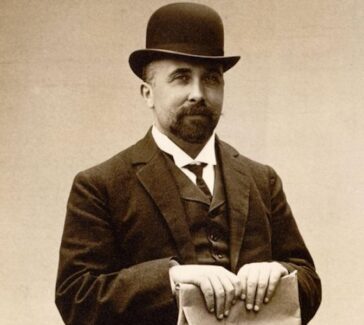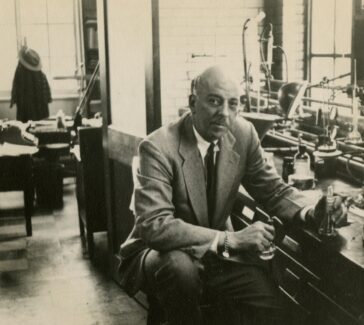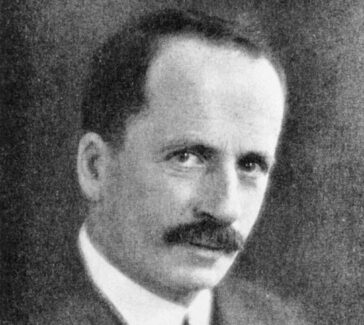Marie Maynard Daly
A biochemist who made lasting contributions to medicine, Daly was the first Black woman to receive a PhD in chemistry.
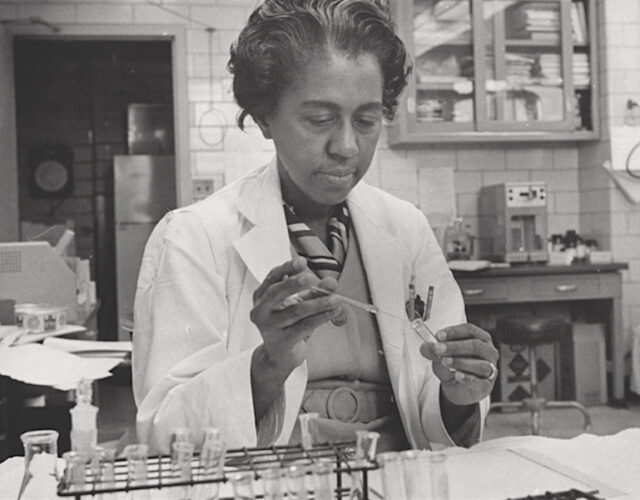
Overcoming the dual hurdles of racial and gender bias, Marie Maynard Daly (1921–2003) conducted influential studies on proteins, sugars, and cholesterol. In 1947 she became the first Black woman to receive a PhD in chemistry in the United States. In addition to her research, she was committed to developing programs to increase the participation of minority students in medical schools and graduate science programs. Daly’s biography helps us understand how individual curiosity, social support, historical circumstances, and professional dedication can foster social and scientific breakthroughs.
Early Support for Scientific Interests
Daly was born in Queens, New York, on April 16, 1921. Her mother, Helen Page, encouraged her children’s academic interests early on, reading at length to Daly and her younger twin brothers. Daly was fascinated, in particular, by Paul De Kruif’s popular 1926 book, Microbe Hunters, a collection of “high adventure” stories about scientists who discovered a “new world under the microscope.”
She was also inspired by her father, Ivan C. Daly, who loved science. Though he had received a scholarship to study chemistry at Cornell University, he could not afford to finish the program.
LEARN MORE
When you look at this book cover, can you imagine what Daly thought it was like to be a microbe hunter? How do you think this book would have made her feel?
You can read the book for yourself or consider this short description of it.
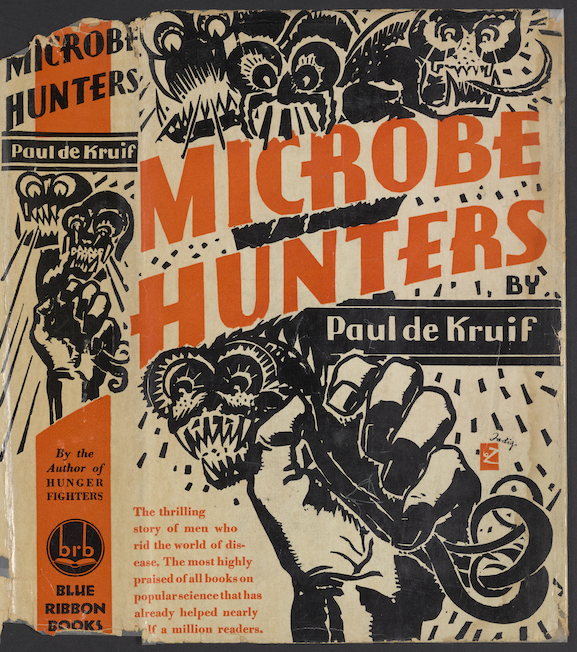
Daly went to Hunter College High School, an all-women’s institution that selectively admitted students based on merit alone. Here, women teachers were positive role models: they supported and encouraged her ambition to become a chemist. After her brothers enlisted to fight in World War II, she enrolled at Queens College in Flushing, New York, which opened in 1937 and was free of charge to students from the community.
Like other schools, Queens College was adjusting to wartime conditions: roughly 1,200 students from the college enlisted in the U.S. military during World War II, which created new openings for women and minorities. Daly graduated in 1942 with numerous honors and a bachelor’s degree in chemistry.
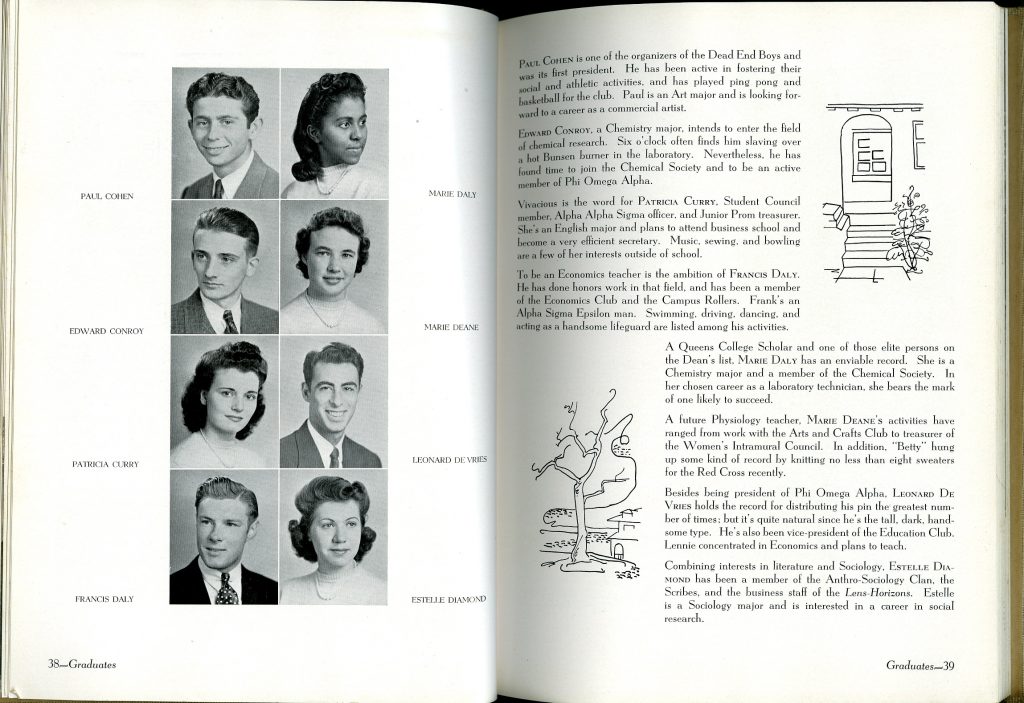
LEARN MORE
Daly is pictured on the top right in this 1942 Queens College Silhouette Yearbook. While she is the only Black graduate pictured, half of the students are women. Her profile on the right page describes her as having an “enviable record” interested in a career as a “laboratory technician.”
Compare the paragraph describing Daly with that of Edward Conroy, the other chemistry major on this page. What words stand out? What similarities and differences do you observe?
Partially Open Doors
World War II motivated U.S. governmental interest in science and technology, which was crucial to the war effort and revitalized the national economy. It also spurred new workforce initiatives that opened doors for women chemists like Daly. But women and minority scientists were often seen as “reservists” who were merely expected to provide temporary and relatively low-ranking support. Daly’s 1942 yearbook profile reflects this understanding, where she is described as having chosen a career as a “laboratory technician.”
Daly did not have to wait long to step into this role: the chemistry department at Queens offered her a job as a part-time laboratory assistant upon her graduation. But rather than stop there, she used the income from this position, along with a series of fellowships, to continue her graduate education. She completed her master’s degree at New York University in just one year, followed by a PhD at Columbia University in 1947.
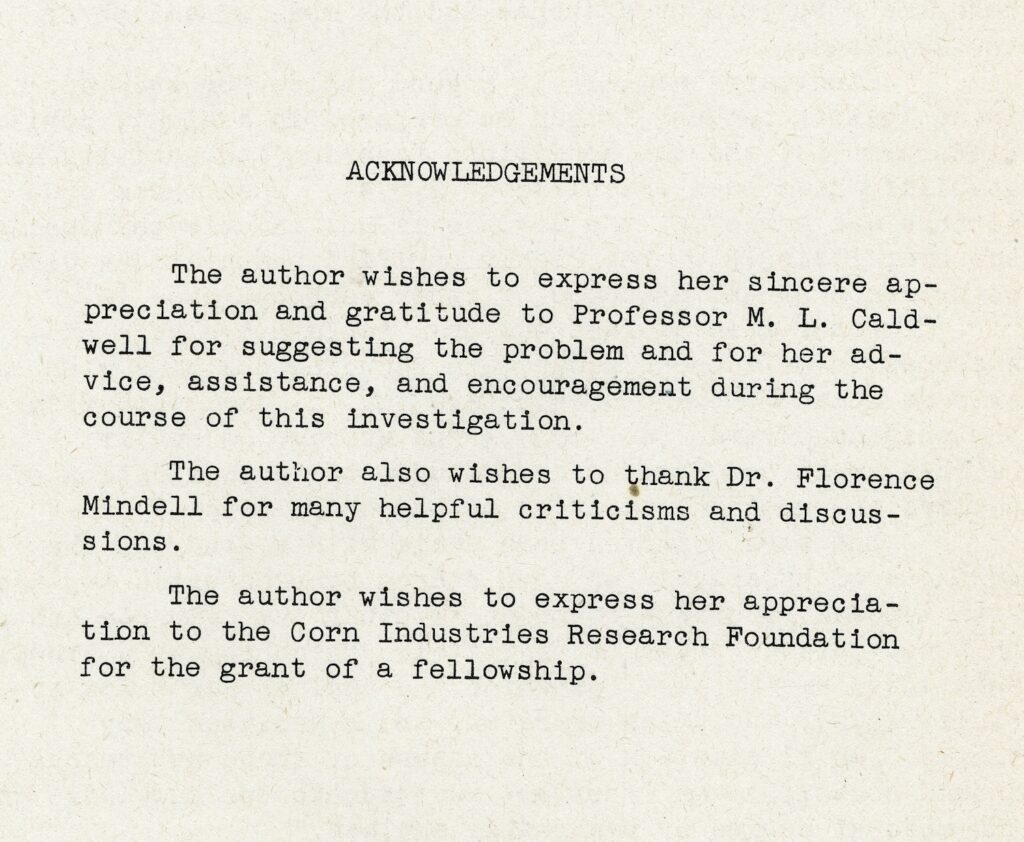
PhD Research under Dr. Caldwell
World War II was ending when Daly entered Columbia. By this time, she was one of several women studying graduate-level chemistry there, many of whom were working with Mary L. Caldwell. Caldwell had developed a strong research profile in the biochemistry of nutrition. This was a prominent arena for women scientists during the first half of the 20th century, an essential part of the war effort, and something widely supported by grants from the business world. Under Caldwell, who was well known for her work on the digestive enzyme amylase, Daly researched how compounds produced in the body participate in digestion.
The title of Daly’s dissertation was “A Study of the Products Formed by the Action of Pancreatic Amylase on Corn Starch.” In her acknowledgments, she indicates that she benefitted from a strong network of women researchers who provided mutual intellectual support. She was awarded her doctoral degree just three years after enrolling in the program.
CLASSROOM DISCUSSION
How can we interpret Daly’s historical accomplishment of being the first Black woman to receive a PhD in chemistry?
Postdoctoral Work in Era of Expansion
After completing her degree, Herman R. Branson hired Daly to teach physical science at Howard University. She wanted to continue her research with Alfred E. Mirsky’s team at the Rockefeller Institute but was told she could only work there if she had outside funding. Two years later, Daly received a grant from the American Cancer Society, which was pioneering new programs for funding scientific research at the time. This allowed her to join Mirsky’s lab. For roughly the next decade, she earned her living from such sources of external support.
When later interviewed about her pivot to cancer research for an article in the New Journal and Guide, Daly expressed a commitment to hunting down the underlying causes of the disease—she was less interested in its clinical treatment. “I am not working on cancers per se,” she said. “I am doing research in cell growth, and my work concerns cancer only insofar as cancer is cell growth.”
Daly remained at the Rockefeller Institute for seven years, studying the composition and metabolism of parts of the cell nucleus. Her work, particularly on the purines and pyrimidines, was an important precursor to the identification of the DNA structure by James Watson and Francis Crick.
Later Research and Advocacy
“If I must return to teaching,” Daly told interviewers in 1951, “I would not mind if I could have the opportunity and facilities for continued research.” Following a productive collaboration with Mirsky at the Rockefeller Institute, she accepted a teaching position back at Columbia in 1955. She joined this with a research appointment at Goldwater Memorial Hospital, through which she studied the relationship between cholesterol and heart attacks with Quentin B. Deming.
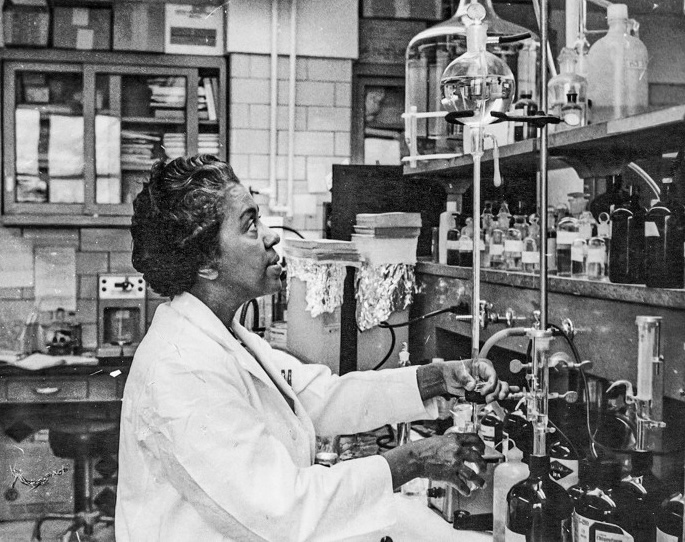
In 1960 Daly and Deming moved their team to the Albert Einstein College of Medicine, where she turned to research on the biochemistry of aging. She was promoted to associate professor in 1971—a title that conferred job security and was one that she held until her retirement in 1986.
During this period, Daly set her sights to the future, extending support to junior researchers in ways that mirrored the mentorship she received in her own early career. She advised graduate students in medicine and chemistry, issued national recommendations for the professional advancement of minority women scientists, and developed programs to increase the enrollment of minority students across graduate STEM programs in New York. In 1988 she established the Ivan C. and Helen H. Daly Scholarship at Queens College to support students of merit in the physical sciences with “demonstrated interest in issues related to minorities in science or African American studies or history.”
In 2022 a collaborative retrospective highlighted Daly’s enduring contributions to the fields of analytical chemistry and biochemistry. While her barrier-breaking accomplishments were unquestionably her own, they also highlight the influence of historical events on the 20th-century growth of U.S. science and the importance of professional collaboration.
Further Reading
Jeannette E. Brown, African American Women Chemists (New York: Oxford University Press, 2020).
Margaret W. Rossiter, Women Scientists in America: Before Affirmative Action, 1940—1972 (Baltimore, MD: Johns Hopkins University Press, 1995).
Lois W. Woodford, “Opportunities for Women in Chemistry,” Journal of Chemical Education 19, no. 11 (1942): 536-538.
Marie M. Daly and A. E. Mirsky, “Chromatography of Purines and Pyrimidines on Starch Columns,” Journal of Biological Chemistry, 179, no. 2 (1949): 981-982.
You might also like
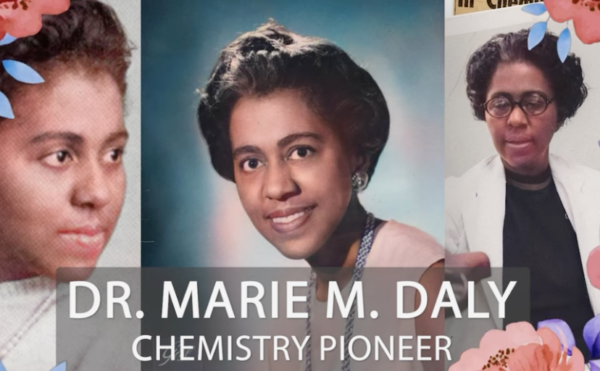
VIDEO
Dr. Marie M. Daly: Chemistry Pioneer
Learn more about the trailblazing scientist in this video produced by the American Chemical Society.
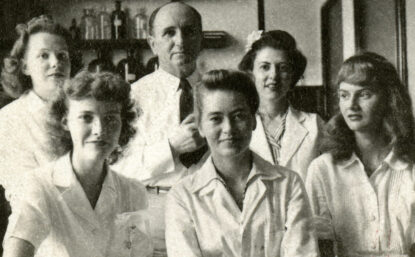
DIGITAL COLLECTIONS
Women & Science Collection
Materials related to notable women scientists as well as images of women working in a variety of laboratory and industrial settings.
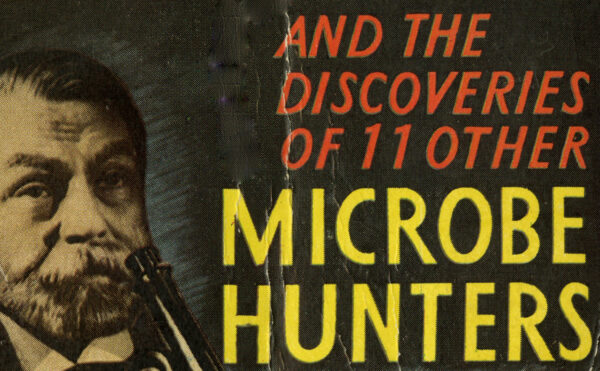
DISTILLATIONS MAGAZINE
Bug Hunters
In the 1920s author Paul de Kruif turned science into an adventure story.
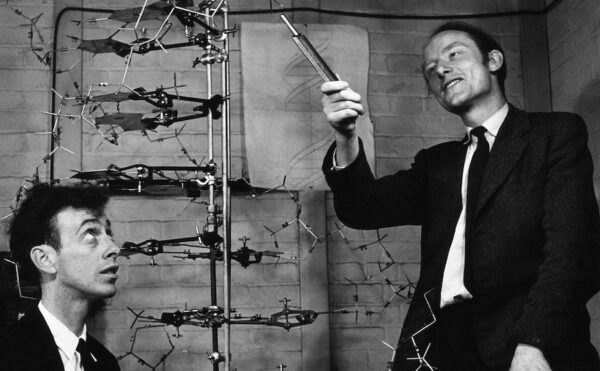
SCIENTIFIC BIOGRAPHIES
DNA Hunters
Learn about James Watson and Francis Crick, two of the scientists responsible for discovering the structure of DNA.
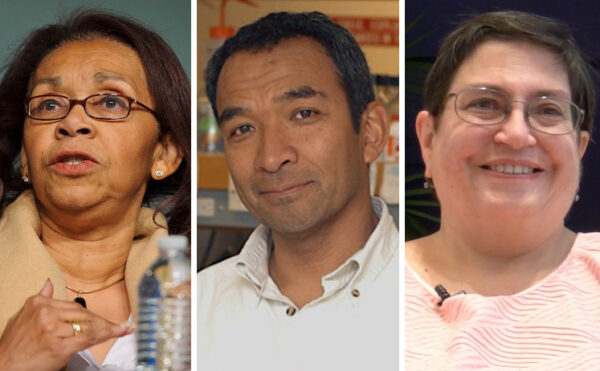
CENTER FOR ORAL HISTORY
Voices of Science
This oral history project shares the stories of five individuals who have faced personal, professional, and social challenges in their scientific careers.
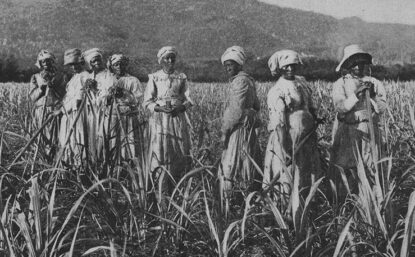
THE DISAPPEARING SPOON PODCAST
Sugar: The Most Evil Molecule
Trace how such a sweet treat has caused so much harm—from slavery to the Nazi death machine.

